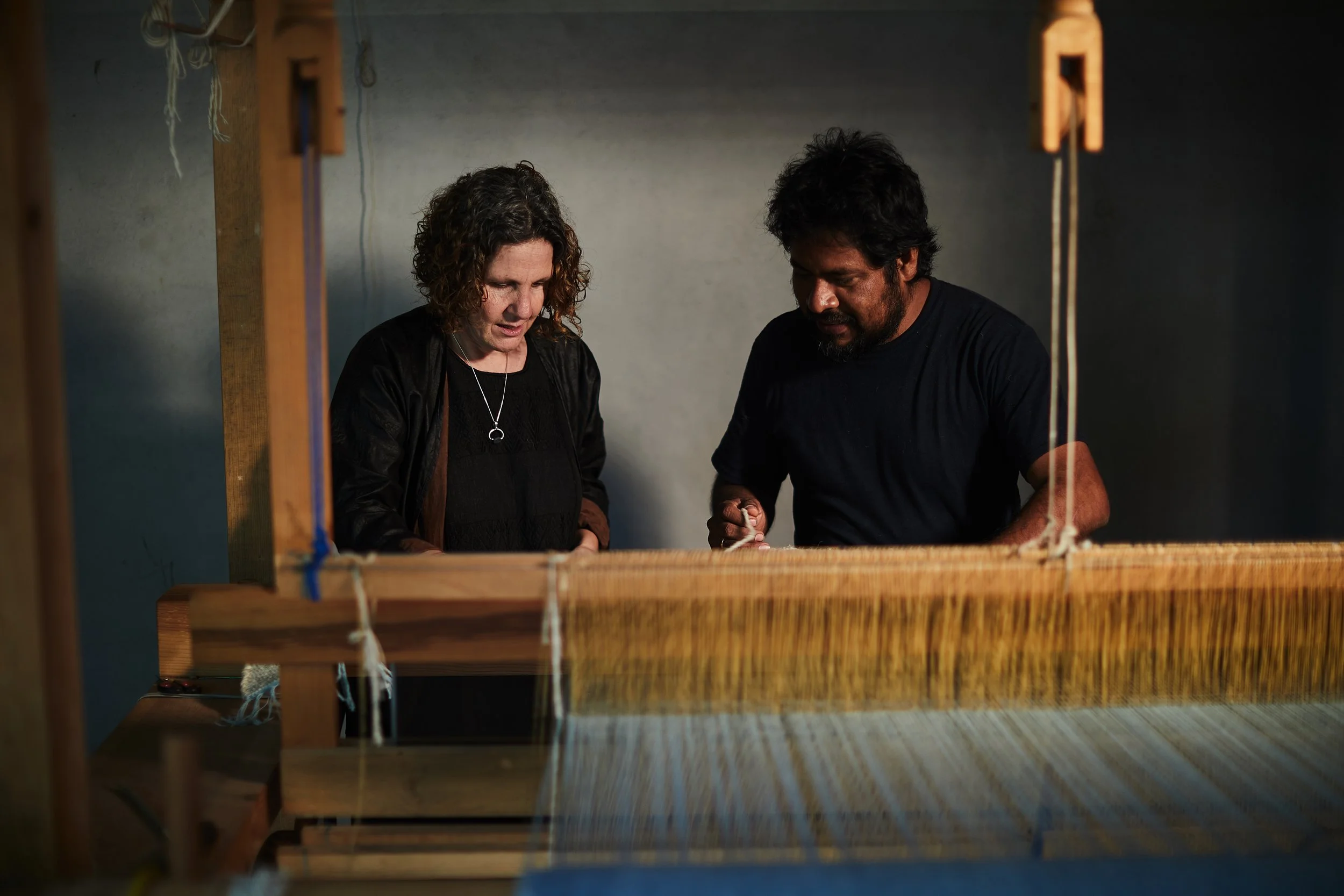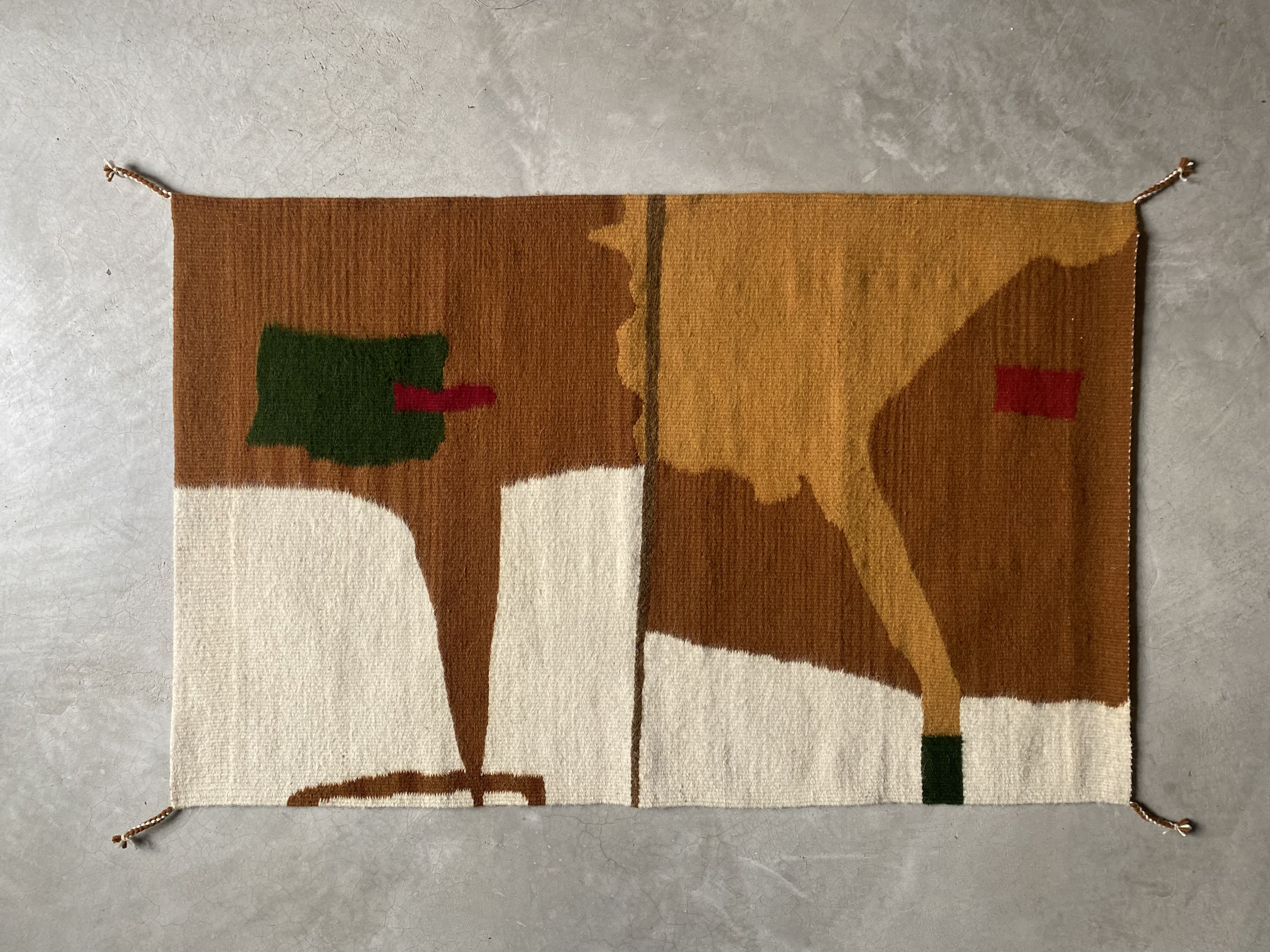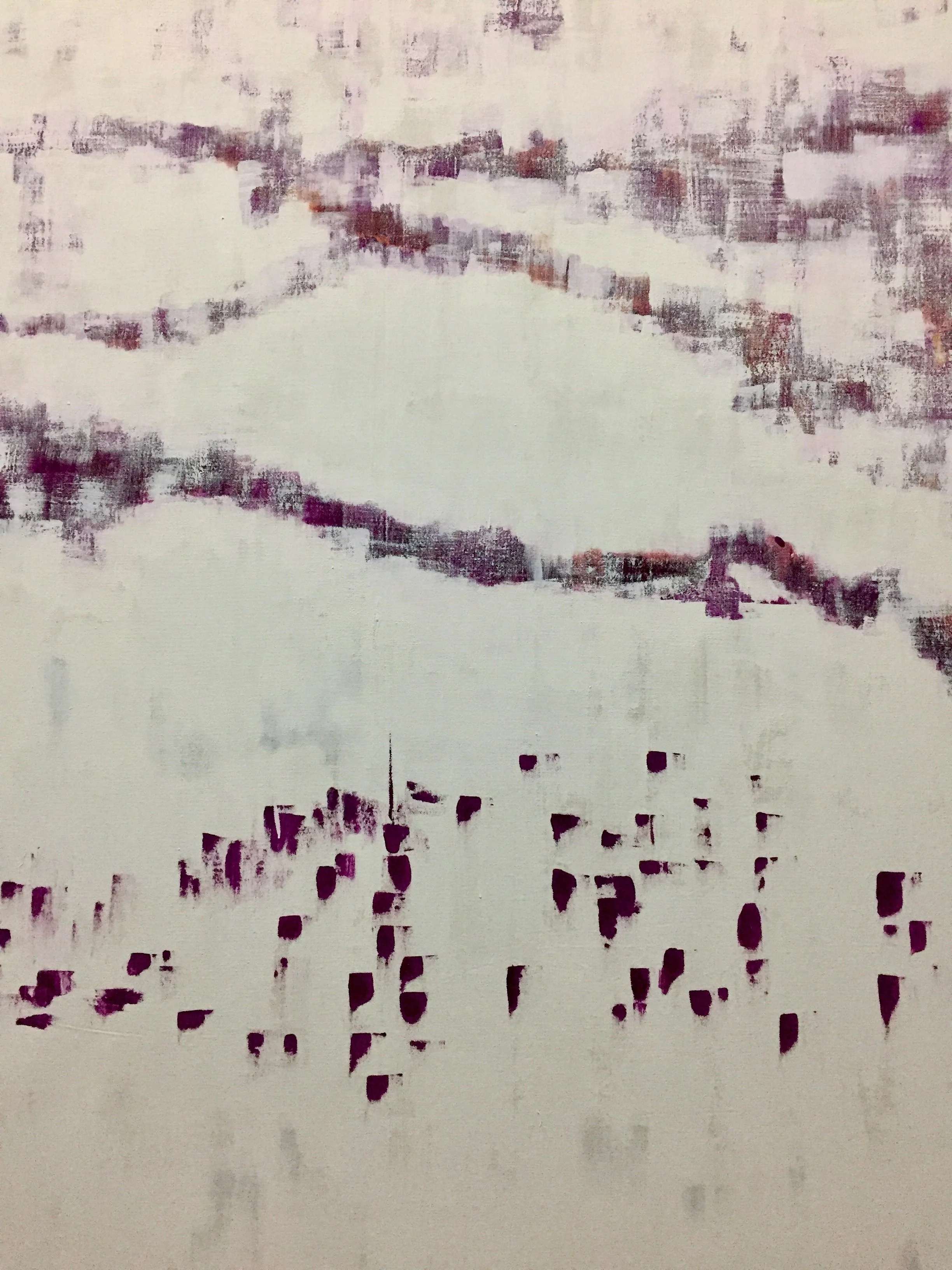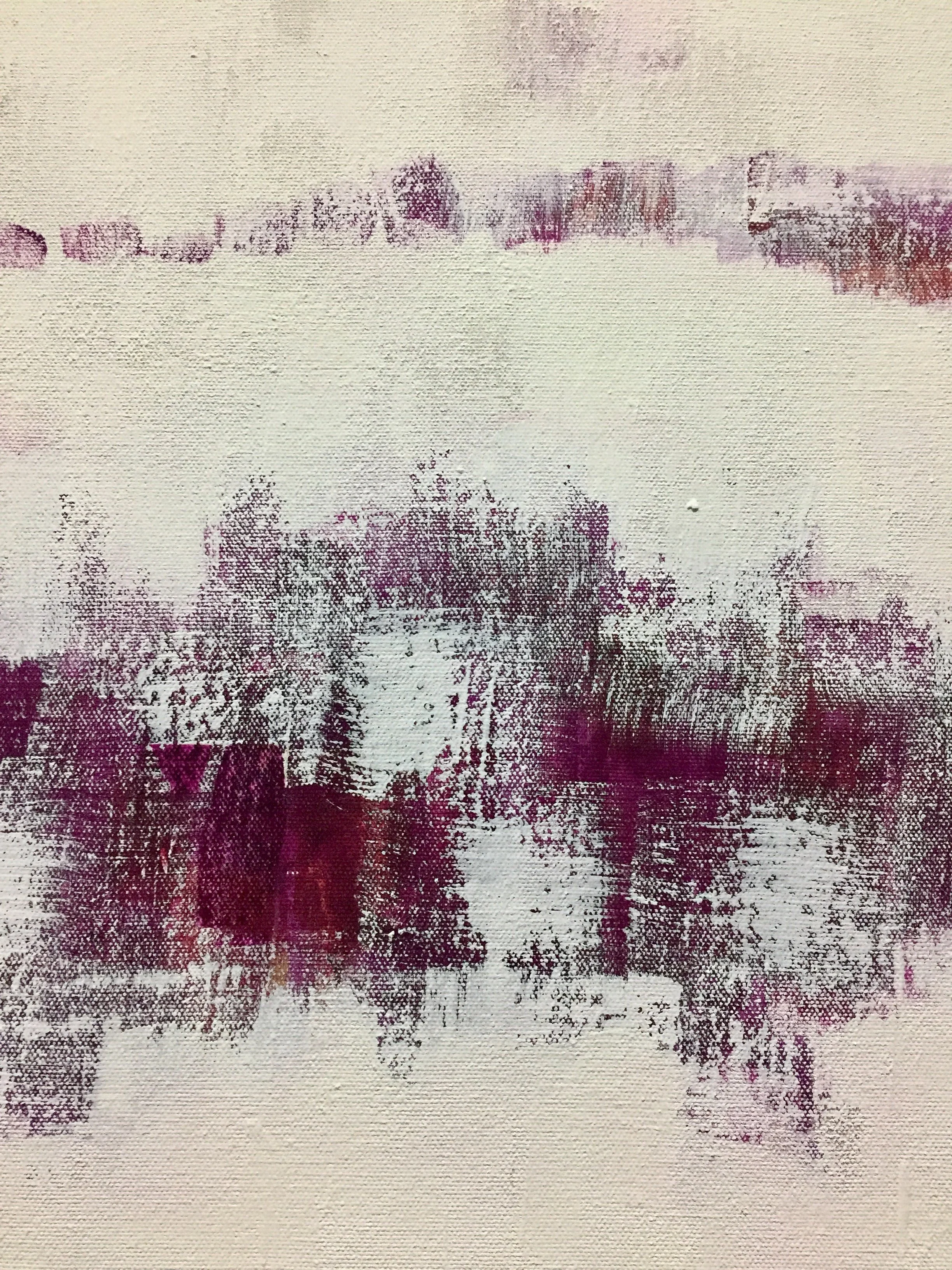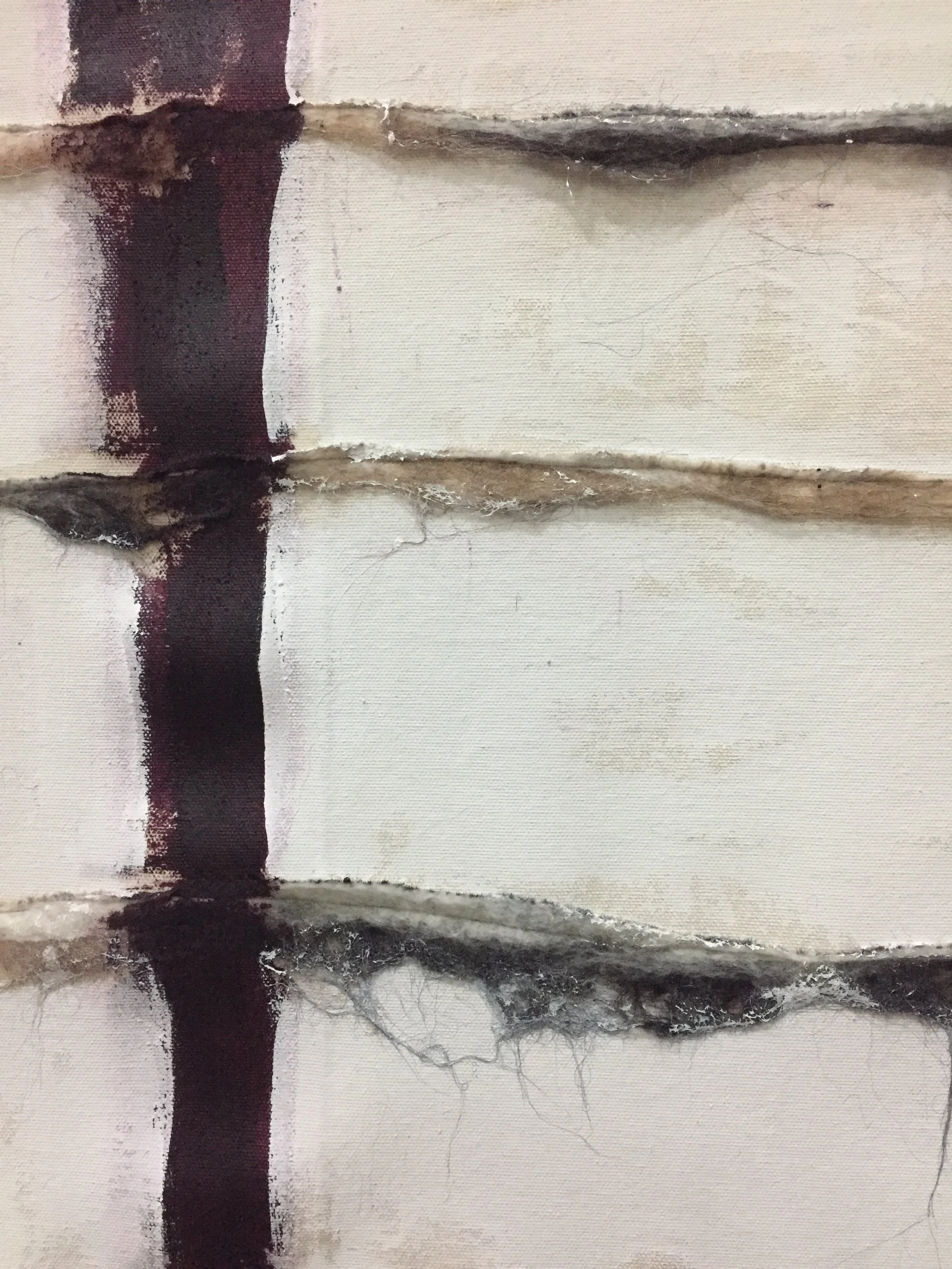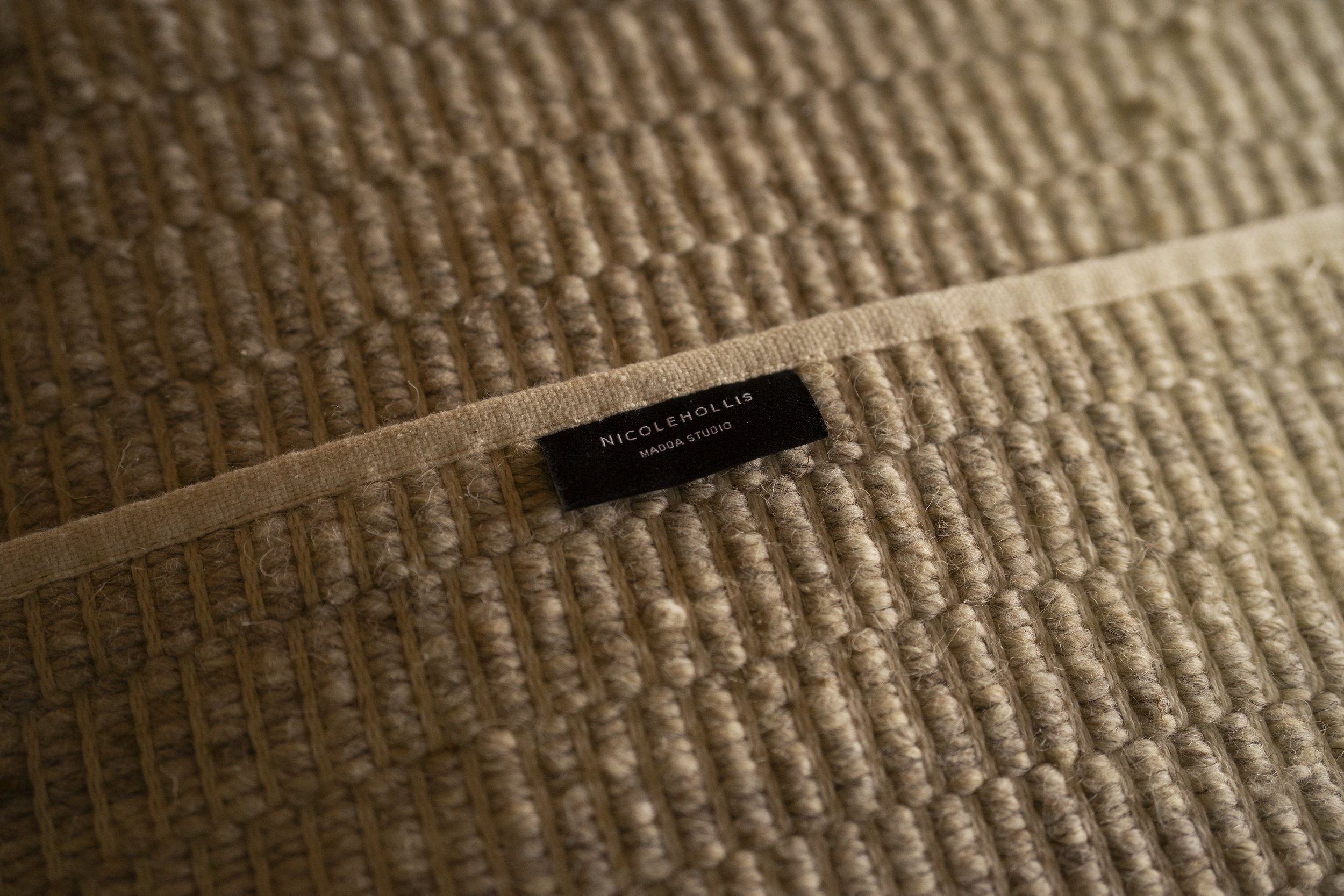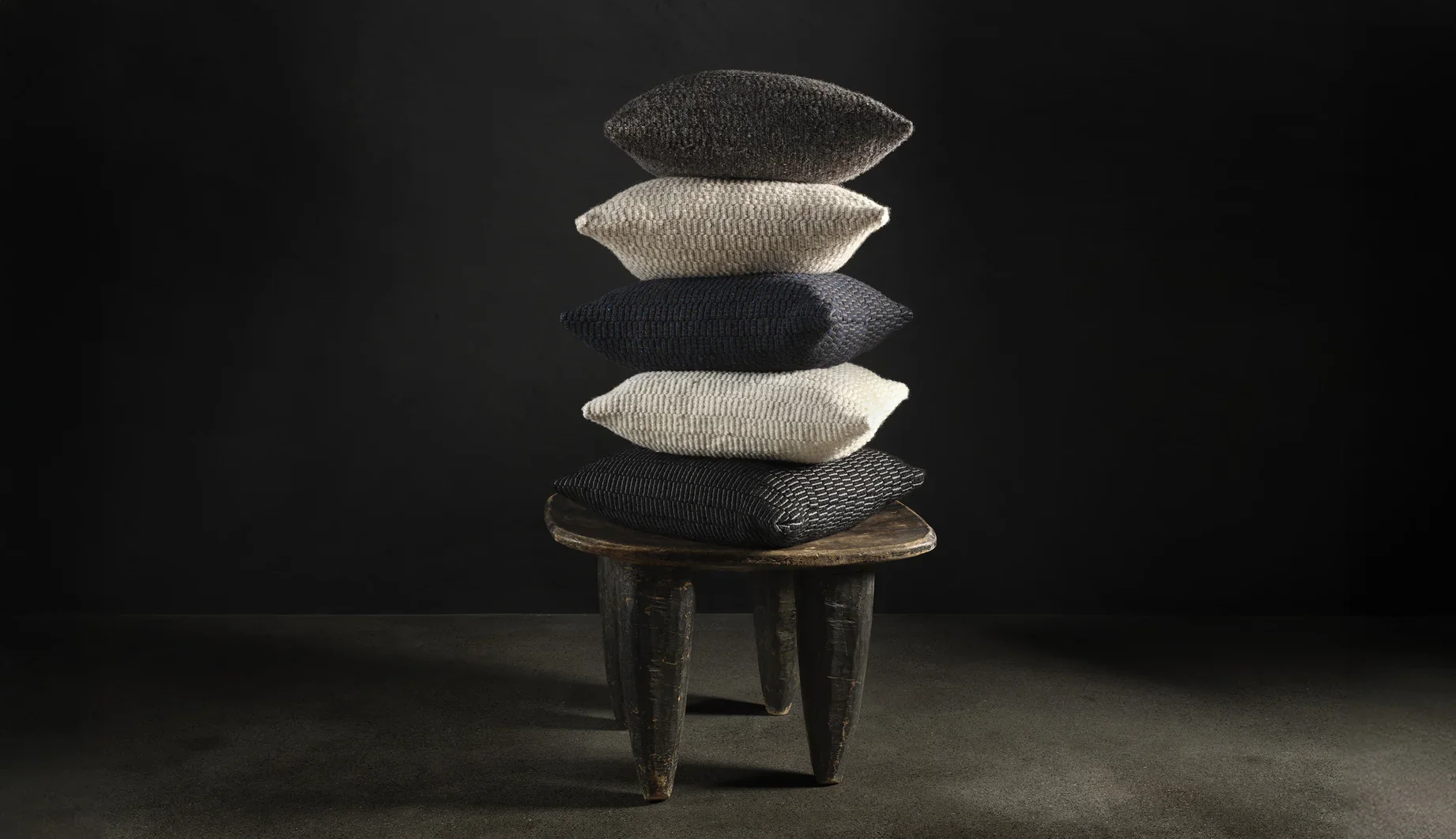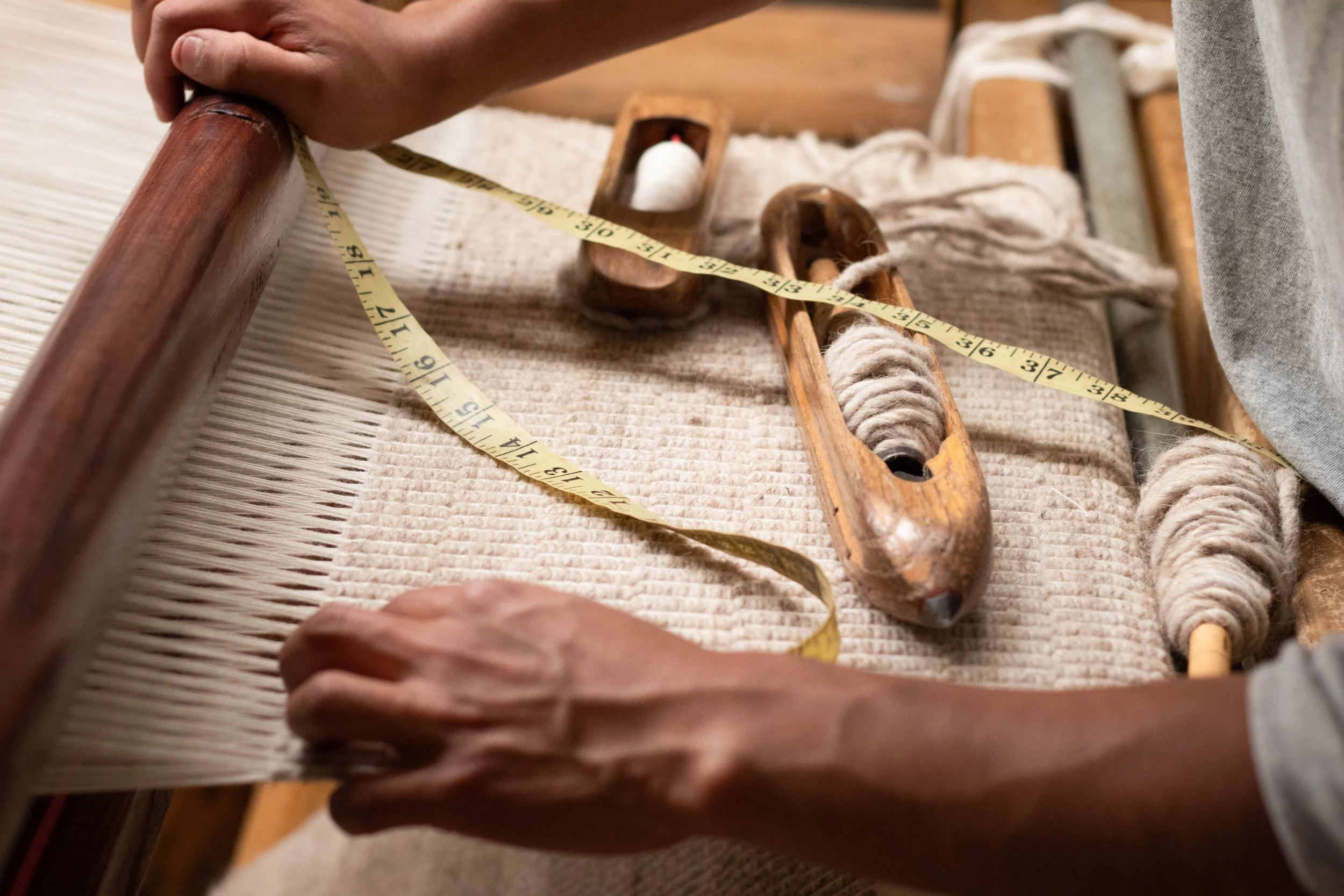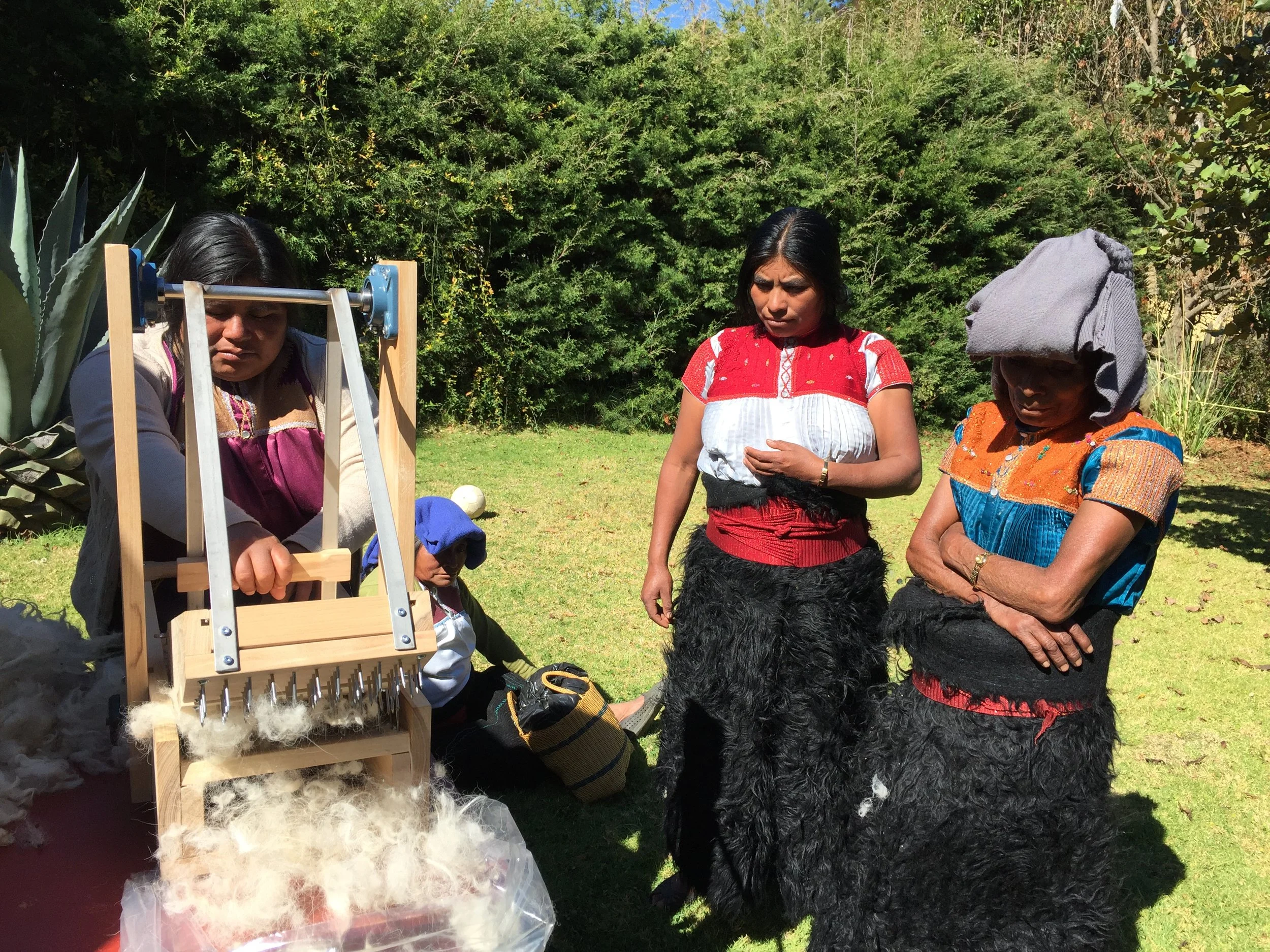
MADDA STUDIO
Our Studio Journal
An Artist's Journey | Maddalena Forcella
As with all great artists, Madda’s story is one of depth and serendipity. After initially working in art restoration in Rome, her curiosity and desire to experience other cultures led her to Mexico…
Madda grew up in Rome, Italy, where she was raised by her photographer mother and journalist father alongside her brother and sister. Madda had always loved to draw, but when it came time to choose a university path, she turned her attention from creating art to studying its history. Madda completed just one year of her course before deciding to work full time in art restoration. Her early projects were in Rome as an apprentice at the Museo de Arte Moderno and later cleaning the marble of the Foro Romano.
Although Madda was finding consistent work in art restoration, she felt that something was missing.
Passion.
As a Journalist and intellectual, Madda’s father instilled the importance of passion in his children. To not simply work a job out of necessity, but out of curiosity and inspiration. Madda’s yearning to explore and to experience other cultures led her to relocate to Mexico after visiting her sister in New York.
“I wanted to see another culture. I wanted to see other ways of life… a totally different way of thinking and living. I wanted to explore other things. Mexico was something that I didn’t know at all, so it was appealing to me.”
Madda’s travels led her to the highlands of Chiapas, where she fell in love with Luis, an Anthropologist from Mexico City.
“To me, it was exciting because it was something totally unknown, so different, and very romantic because I was in love… It was the first time that I got to know textiles and natural dyes.”
For the next couple of years, Madda found creative ways to earn a living in Chiapas as a painter and tour guide - she even made pasta in restaurants! Feeling the need to establish herself and start a career, she decided to move to Mexico City with Luis, where she was accepted to study textile design at a local university. The varied curriculum allowed her to explore her interest in color theory, textiles, paper making, natural dyes and more.
Just before completing her degree, Luis was offered an opportunity in San Cristóbal, Chiapas, directing a new cultural cooperative. The offer was extended to Madda as well, to lead workshops in the textile branch of the cooperative. The young couple packed up their life in Mexico City and moved back to Chiapas.
“We started with just one loom and one weaver, importing wool from Australia. We made pillow covers for a couple of hotels in town. When we started the project, we wanted to support the local economy and give more people the opportunity to use traditional techniques. The idea was to apply these traditional techniques to different kinds of products - homewares such as rugs, pillows and bedding. We were like pioneers in this way, making modern designs come to life using traditional techniques. At that time, there was no such thing even in Mexico. So this was a preview of what was to come, the concept that grew into Madda Studio.”
Living among Chamula artisans and learning their ancient techniques broadened Madda’s creative scope and deepened her appreciation of ancient ancestral techniques.
“The Chamula spend immeasurable time processing raw wool to make fabric for their community’s clothing. Magical and timeless rituals transform raw material into simple, beautiful, and expressive forms that I honor. Those rituals and the processes involving the natural world speak to all of us as alternatives to unbridled consumption and homogenization.”
Immersing herself in natural dyes and handmade textiles also expanded Madda’s voice as a painter, inspiring her to extract pigments from plants to create mixed media collages on canvas. Some of these explorations later became the basis for Madda Studio’s tapestry collections, including Apoala and Terra.
Terra by Maddalena Forcella, in woven form.
The diversity in her work reflects Madda’s expansive and dynamic approach, emphasizing color and texture across time and multiple mediums. It is her passion for generational knowledge and technical skills that propels her vision, making her a strong collaborative force for her clients as well as an independent artist.
A Meeting of Traditions: Madda Studio × NICOLEHOLLIS
We are honored to announce the launch of our latest collaboration with San Francisco-based interior design studio NICOLEHOLLIS.
We are honored that our textiles are part of the new NICOLEHOLLIS Collection; rooted in traditional methods and refined by a modern sensibility, the collection brings a sense of intimacy and artistry into the rituals of daily life. This is old world craft for modern living.
Our contribution blends Sardinian and Mexican textile design techniques; two lands where ancient traditions still speak through the hands of artisans. Each Compound Weave pillow case is a functional piece of fine art that preserves ancestral knowledge, while also offering timeless beauty for today’s interiors.
Blending Landscapes
Woven with the special wool of the Chiapa sheep - raised by the Chamula people in the Highlands of Chiapas - our pillows in the NICOLEHOLLIS Collection honor the rich textures made possible only through natural, chemical-free processes. Descendents of the ancient Maya, the Chamula have preserved their shearing, spinning and dyeing techniques passed down through generations. Having lived in Chiapas for 25 years, Madda developed a partnership with a collective of Chamula women artisans. Together, they transform the wool from raw materials into elegant textiles, weaving Madda’s Italian design aesthetic into modern heirlooms.
Hand-spun with pre-Hispanic drop spindles, the wool retains its lanolin-rich texture, allowing it to absorb our natural dyes of indigo and logwood with extraordinary depth. These dyes are steeped in Mexican history. They reveal their beauty slowly over time, shaped by light and use, reminding us that textiles are alive, never fixed.
With the wool spun and dyed, Madda dove into her alchemic design process in collaboration with the interior designer Nicole Hollis and her San Francisco based team. Synthesizing the vision of Nicole Hollis, with her Italian aesthetic and the rich materials and talents of Mexican artisans, Madda created these custom pillows using a “compound weave” inspired from her Sardinian roots. One of the earlier versions of the compound weave was originally developed in collaboration with bonetti/kozerski DPC, a New York based architecture firm. Since then, the design has evolved and been modified to create new expressions of beauty.
The Beauty of the Handmade
At Madda Studio, we celebrate the tonal variations of the wool, the unpredictability of natural dyeing and the beauty of irregularity. These are testament to the hands, the lands, and the tradition woven into every piece.
“The variation of tones in the natural wool makes this collection unique and completely different to if we used industrial, mass-produced wool, where the tones are completely uniform. As a result, each work represents and celebrates the uniqueness, the non-repeatability, the idiosyncrasy of the material and the irregularities of handmade textiles. In a world where ready-made, mass-produced and readily disposable items are abundant, we believe in the enduring quality, variability and imperfect beauty of handcrafted goods.”
- Maddalena Forcella, Textile Designer and Co-Founder of Madda Studio.
Living Textiles
It is our mission to bring traditional and environmentally sustainable techniques into the world of design, integrating the wisdom of our ancestors into modern living. We partner with interior designers and retailers to create custom textile collections that bring their vision to life while honoring the beauty of handmade craft.
We invite you to explore the NICOLEHOLLIS Collection and welcome all inquiries regarding future collaborations. Details about our Trade Program are also now available. Fill out our Trade Program form today for more information.
The NICOLEHOLLIS Collection is dedicated to the enduring beauty of craft. Guided by a belief in material integrity, timeless form, and the quiet power of objects made with intention, each piece is created in partnership with artists and makers whose work has long shaped NICOLEHOLLIS interiors.
Our Dye Kitchen
Allow us to introduce you to the two women who make the natural dye magic happen at our Studio. Lorena and Marivel have been a part of Madda Studio’s natural dye kitchen since our Studio began.
Allow us to introduce you to the two women who make the natural dye magic happen at our Studio. Lorena and Marivel have been a part of Madda Studio’s natural dye kitchen since our Studio began. We interviewed them about their background in textiles passion for the process of using natural dyes:
Q: How did you learn about natural dyes?
Lorena: We started this kind of work with Madda. We learned everything from her. You learn by way of practicing, always gaining new knowledge with each experimentation.
Marivel: In the early days of Madda Studio, we did experiments, trying out different quantities and combinations. From this we derived the recipes for the standard colors Madda Studio offers. Repeating the process and making small alterations each time is what helps you learn about a natural dye’s tendencies.
Lorena in the dye kitchen.
Q: How does the use of natural dyes make a piece special?
Marivel: Natural dyes are unique because the results of the dye on the wool will always vary. This makes it challenging, as you have to adapt - but it also means you are always kept on your toes!
Lorena: Like a work of art, there will always be variations. Natural colors are never exactly identical, which is where the beauty lies.
Q: How do you feel when you see the results of the finished product?
Lorena: Satisfaction. Some projects are completed with ease, if you achieve the right color on the first try, while others can be more complicated. All in all, to see a finished piece brings the satisfaction of knowing you’ve completed another project.
Marivel: To see all of the time, work and effort come together in a completed piece, it makes you say, “wow, I did this.”
In recent weeks, our dye kitchen has been alive with the deep violet hues of logwood. Native to the Yucatan peninsula and the neighbouring low-lying wetlands of Mexico, the tree was first exploited by the Spanish in the Campeche Bay, from which the name is derived (Palo de Campeche).
Renowned for its remarkable versatility, logwood offers one of the widest color ranges of any plant-based dye. Extracted from the heartwood, it produces deep, saturated shades from purple to blue. When combined with iron, it yields elegant greys and even deep black tones that are notoriously hard to achieve with natural dyes.
The importance of this dye wood was enormous until the second half of the 19th century, being basically the only dyestuff able to give a deep saturated black. More recently, logwood has been in danger of disappearing completely. We support reforestation by sourcing our logwood from Planalto, a tree-planting initiative in southern Mexico.
La Grana Cochinilla
Red, a hue synonymous with intensity and passion, has carried varied meanings throughout history. In Oaxaca, Mexico, this color takes on profound significance rooted in the Mixtec and Zapotec traditions, where cochineal, a tiny scale parasite found on nopal cacti, served as a source of vibrant red dye.
La grana cochinilla
Red, a hue synonymous with intensity and passion, has carried varied meanings throughout history. In Oaxaca, Mexico, this color takes on profound significance rooted in the Mixtec and Zapotec traditions, where cochineal, a tiny scale parasite found on nopal cacti, served as a source of vibrant red dye.
The female cochineal, residing in a waxy nest on the cactus, produces red carminic acid as a defense mechanism. During the era of the Mixtecs and Zapoetcs, the process of harvesting cochineal was a meticulous and ceremonial affair. It took approximately three to four months for the cochineal to mature after seeding, and the harvesting itself was conducted with great care.
In modern times, the process still involves brushing or scraping off the cochineal from the nopal leaves and spreading them out in the sun to dry. To expedite the drying process, some farmers may use ovens or immerse the insects in hot water, also called ‘tazmascalli’, causing them to shrivel up and lose about a third of their weight.
Known as Nocheztly, or "blood of nopal," by the Aztecs, who demanded large quantities as tribute from Mixtec and Zapotec producers, grana was deeply intertwined with their identity. Beyond textiles, leather, and feathers, it found use in cosmetics and wound healing, embodying the color of the sun in Aztec symbolism, linked to rituals of blood, death, and sacrifice.
The spread of cochineal dye worldwide traces back to Spanish explorers during the Americas' colonization. Recognizing its vibrant color and colorfast qualities, cochineal became a sought-after commodity, shaping fashion, art, and culture across Europe. Its historical significance remains a testament to the intricate dance between culture, trade, and the pursuit of enduring, vibrant color.
Globally, red, scarlet, and purple textiles historically symbolized wealth and power, reserved for royalty and religious ceremonies. Cochineal dye, offering enduring reds and purples, became a game-changer.
At Madda Studio, cochineal is one of the most frequently used natural pigments. Our primary supplier is Jose Manuel Lorea, a local cochineal farmer in Oaxaca. When the dried insects are delivered to the studio, Lorena and Marivel, who oversee the dyeing process, grind them into a smooth powder. This powder is then mixed with water and citric acid, which helps enhance the vibrancy of the resulting hue. The mordanted high-quality wool and cotton skeins are simmered in this mixture. For purple hues, a second dye bath of indigo is used, while for orange tones, the skeins can be soaked in a flower bath with beautiful cempasuchil.
The dyeing process is careful, and the proportions of the ingredients play a crucial role in determining the intensity and vibrancy of the colors achieved. Once dyed and dried, the yarn typically continues its journey to the nearby village of Teotitlan. There, it is skillfully woven into carpets and accessories, either based on designs by Madda herself or as per the preferences of clients. If you’re curious about Madda's designs you'll find most of them here on our webpage where it is also possible to download the product catalog.
The Wool Project
Wool is the raw material of our products and the soul/heart of our work. All the wool we use in our creations is spun by hand with a pre-hispanic drop spindle by around 60 indigenous Chamula women from different villages in the highlands of Chiapas.
The Wool Project:
working towards a sustainable production line
Wool is the raw material of our products and the soul/heart of our work. All the wool we use in our creations is spun by hand with a pre-hispanic drop spindle by around 60 indigenous Chamula women from different villages in the highlands of Chiapas.Processing wool is very labor-intensive work. It takes more than 20 hours to process 1kg of wool and often a rug will have more than 20kg of wool. It must be sheered off the sheep, washed in warm water, carded and cleaned, and then pulled apart and spun - all by hand.
The volume of wool required for our orders and the commitment we maintain with different collaborators, has led us to work closely with the non-profit association El Camino de Los Altos. El Camino de Los Altos is located in San Cristobal de Las Casas, Chiapas and is comprised of 130 women textile artisans.
We have worked closely with El Camino de los Altos to develop a range of wool tones that we currently use in our textiles. Most recently, Madda Studio worked with El Camino de Los Altos to secure funding for the Wool Project from Los Amigos de Arte Popular.
The funds raised for the Wool Project assist in further developing the group of the spinners in Bautista Chico, a Chamula ethnic group that is part of the association El Camino de los Altos located in the highlands of Chiapas. These funds were used for providing tools, training and raw materials to support their business.
The growth of the market that El Camino de los Altos and Madda Studio are in the process of developing will support the Chamula women and their families through employment opportunities. In a region with few opportunities to find consistent work, this provides the women with culturally appropriate employment, whilst also preserving the ancient tradition of spinning wool on a Pre-Hispanic spindle.
Due to our growing demand for raw material, this year, 2018, we have resumed the collaboration which started many years ago with three additional spinning groups. We are committed to ensuring that our demand is constant to guarantee a stable source of income for these women.
Our Color Palette
We use natural dyes following the logic of color theory. Cochineal (red), indigo (blue) and marigold (yellow) create our primary colors. From their mixture, we obtain secondary colors: green, purple and orange.
OUR COLOR PALETTE:
AN INTRODUCTION TO OUR NATURAL DYES
COCHINEAL
Cochineal is part of Oaxaca's cultural heritage; it is considered one of the great treasures of the new world that made the region wealthy during the Spanish Colonial period. It was such a lucrative trading product that the Spanish Crown kept its place of origin in order to maintain its monopoly over it.
At the time, nobody imagined that the carminic acid responsible for the precious color was contained in the body of the Dactylopius coccus insect, a sessile parasite that lives on nopales (Opuntia Cacti). Cochineal produces an incredible palette of colors, ranging from magenta to burgundy and from pink tones to scarlet red.
BRAZILWOOD
Brazilwood is used as a traditional medicine to relieve cardiovascular and renal conditions. Brazilwood is not a particularly stable color and in the past their were very strict rules regarding its use. However, its color is so beautiful that we cannot resist using it. To improve its resistance to light, we combine it with cochineal, which results in a red variant with a tendency towards brown.
MARIGOLD
Thousands of marigold flowers are cultivated each year in Mexico for the Day of the Dead in November. Following the celebration, we collect them from altars and dry them out. These flowers produce a brilliant yellow that we use alone or by combining it with indigo to produce a beautiful spectrum of rich greens.
INDIGO
The indigo we use is extracted in Niltepec, Oaxaca, where the indigofera suffruticosa plant is grown. Indigo is a dye that under normal circumstances is not soluble in water and requires a different process: the indigo must be prepared in an alkaline medium. The blue color appears through the process of reduction and oxidation; upon contact with the air, the fiber goes from yellow to turquoise, until finally reaching blue.
CHAMULA BLACK
Chamula black is made through three days of intensive labor, using local plants that react with a special clay, which is rich in iron. It is a traditional technique developed by the indigenous Chamula women in the Highlands of Chiapas. This technique produces a deep, lustrous black.
LOGWOOD
Logwood produces a bluish-black. It is a color that the chemical colorants industry could not perfectly match. As a result, Logwood continues to be used despite the widespread use of chemical dyes. At Madda Studio, we like to combine it with our darkest wool to obtain a vibrant black. We also use it to create a deep purple.
Wool of the Chiapa Sheep
All of the textiles we produce are painstakingly crafted to yield truly one of a kind, timeless pieces. Each rug is created from the wool of the Chiapa sheep, a breed that has evolved over 500 years in the highlands of Chiapas in Southern Mexico.
Since the XVI century the ‘cotton deer’ became the Batsi Chij or the ‘real sheep’ and its ‘cotton’ - the fleece - became the raw material of the traditional wool dress which is a symbol of the Chamula identity, and an important income source for their households. The same sheep are now known as the ‘Chiapa’ sheep, and have become sacred animals to the Chamula people and are treated as treasured pets.
A ‘deer covered in cotton’ is a poetic image, but the social, economic and cultural importance of the sheep and its wool goes beyond poetry for the Chamula women, who are in charge of the animal care and have the responsibility for the processing of the wool and the weaving.
This wool is unique to Mexico: almost 500 years of breeding, practiced by the shepherdesses and the indigenous weavers have created a highly specialized product. It is hand spun, resulting in a yarn of uneven thickness, infusing the fabric with its characteristic texture. Because the wool is not being treated industrially, it retains its natural luster and allows for vibrant colors to be achieved during the dyeing process.
All the wool we use in our creations is spun by hand with a pre-hispanic drop spindle by around 60 indigenous Chamula women from different villages in the highlands of Chiapas. It is very labor intensive work for example, it takes more than 20 hours to process 1kilo of wool and often a rug will have more than 20 kilos of wool.
We have developed together with the cooperative El Camino de Los Altos a palette of shades of gray mixing the different colors of the fleeces and we work closely to improve the quality and cleanliness of the threads, streamline the process and facilitating the work of the spinning.
Due to our growing demand for raw material, this year, 2018, we have resumed the collaboration which started many years ago with three additional spinning groups. We are committed to ensuring that our demand is constant in order to guarantee a stable source of income for these women.




